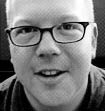Art Projects
Generative Video
Artist Info / CV
Screensavers
evilcomputergenius
Resume
Blog 2005-2010
Blog
About
Don Relyea's Blog
I like to write about interesting art projects,
so give me a heads up if you have new project
and I'll write about it.

Don Relyea
email:
don(at)donrelyea.com
- art (215)
- baby (10)
- ebay (10)
- fossils (1)
- funny (4)
- general (15)
- kids (2)
- koi_pond (9)
- music (30)
- net_activism (1)
- photography (2)
- pmmg (2)
- screensavers (7)
- technology (2)
- video_art (23)
Blog RSS Feed

Art RSS Feed

Music RSS Feed

Screensavers RSS Feed

Add my blog to your
Google home page

Blogs:
Chris Ashley
Tom Moody
BLDG blog
Walker Art Center
turbulence.org
collisiondetection.net
She Dreams in Digital
kevan.org
2blowhards.com
thinking about art
artblog.net
the generator blog
The Presurfer
Mike Butler
Erik Smartt
patentlysilly.com
angrypirate.com
Chris Jagers
Paperback Writer
lifehacker
Mark Gould
asquare.org
m.d. mcmullin
amovablefeast
accuracy and aesthetics
phawker.com

Bombshell

Agendas Under Fire

110th Assembly

Meret Oppenheim portrait

Image Reconstruction

Ready Made Glitch

Slit Scan 3d Images

Systemic Sky

Slit Scan Photography

Monochrome Generator

Space Filling Curve Art

Hair Particle Drawing
Arts and New Media
Sect of Homokaasu
Roman Verostko
Jared Tarbell
Marius Watz
Juergen Schwietering
MIT Media Lab
eyebeam.org
ARS Electronica
mocoloco.com
rhizome.org
runme.org
core77.com
IAAA
furtherfield.org
Cory Arcangel
Philip Galanter
Roy Stanfield
Adrian Ward
ambienttv.ne
Alex Dragulescu
toxi
generator x
database of virtual art
Blast Theory
Institute for Applied Autonomy
0100101110101101.org
Bathsheba Grossman
Ariel Malka
BLF
Art Crimes
Buff Monster
Hactivist
rtmark
Faile
Mute
Crumb
the Yes Men
Marcel
X257.com
moma
amoda.org
artforum
metropolismag.com
neural.it
EFF
{G2}
Kate Armstrong
no-org.net
mnartists.org
Casey Reas
Vlad_Nanca
digitalsouls
Transmediale
Media Art Net
treasurecrumbs
Art Interactive
Electronic Arts Intermix
artsjournal
MTAA
Suzanne G
onreact
Wooster Collective
computergraphica.com
hardisco.com
inhabitat.com
c505
recyclart
ultra eczema
Kris Davidson
Robert Spahr
drainmag.com
Thor Johnson
Sun, 19 Oct 2008
Sara AKA bonzaibondo is working on a MA degree project and stumbled onto my work while doing research. Bonzaibondo wrote a nice blog post about my work and had some questions about my use of geometry in my art and my thoughts on geometry in art.
Since most of my work is created in some kind of programming language, it is natural to describe shapes and forms with math and both 2d and 3d geometry. I have always enjoyed math. From about 1999-2003 I developed severe sleep apnea, this deprived my brain of oxygen and meaningful sleep. Over that time I began to lose the ability to do math, solve complex problems, and even routine programming exercises became extremely difficult.
I thought I was losing my mind. When I figured out what was wrong and started treatment, it was as though I had just emerged from a thick fog into daylight. I immersed myself in math and exploratory programming with a new found zeal. The recovery and subsequent rediscovery of my love for math was the catalyst for the burst of abstract geometric and space-filling curve works.
Geometry will always have a place in the world of contemporary art. Successful artists are successful manipulators. Geometry is a great foil for manipulation. Why is it that people are drawn to compositions with certain proportions? When something is out of proportion, why is it so jarring?
I think that a lot of the answers to these questions lie in neuroscience and the way our brains are wired to recognize patterns and forms. There have been a lot of recent studies that show that we have at a minimum 2 brain functions going on at the same time, the executive mind and the habitual mind. The executive mind is what we engage when we encounter something new or need to solve a problem, the habitual mind is our autopilot. This is not a new concept, ancient Zen masters were aware of this. The habitual mind is programmed through repetition to detect patterns and shapes and it keys in on certain proportions like golden ratios, facial symmetry, etc. As an artist you can play with this feature in your viewers brains to evoke a response.

Mark Mothersbaugh's current exhibit at LACDA titled "Beautiful Mutants" is great example this manipulative technique in action. http://www.lacda.com/exhibits/mothersbaugh.html
- July 2011 (1)
- December 2010 (1)
- November 2010 (2)
- October 2010 (2)
- July 2010 (2)
- June 2010 (1)
- May 2010 (1)
- April 2010 (1)
- March 2010 (3)
- February 2010 (3)
- January 2010 (3)
- December 2009 (1)
- November 2009 (3)
- October 2009 (2)
- September 2009 (4)
- August 2009 (3)
- July 2009 (2)
- June 2009 (3)
- May 2009 (2)
- April 2009 (1)
- March 2009 (7)
- February 2009 (1)
- January 2009 (3)
- December 2008 (3)
- November 2008 (4)
- October 2008 (5)
- September 2008 (2)
- August 2008 (5)
- July 2008 (4)
- June 2008 (3)
- May 2008 (3)
- April 2008 (2)
- March 2008 (7)
- February 2008 (9)
- January 2008 (5)
- December 2007 (2)
- November 2007 (5)
- October 2007 (5)
- September 2007 (3)
- August 2007 (4)
- July 2007 (3)
- June 2007 (5)
- May 2007 (8)
- April 2007 (37)
- January 2007 (6)
- December 2006 (7)
- November 2006 (9)
- October 2006 (11)
- September 2006 (12)
- August 2006 (12)
- July 2006 (7)
- June 2006 (5)
- May 2006 (5)
- April 2006 (4)
- March 2006 (8)
- February 2006 (4)
- January 2006 (9)
- December 2005 (3)
- November 2005 (3)
- October 2005 (6)
- September 2005 (9)
- August 2005 (11)
- July 2005 (9)
- June 2005 (14)
- May 2005 (3)
